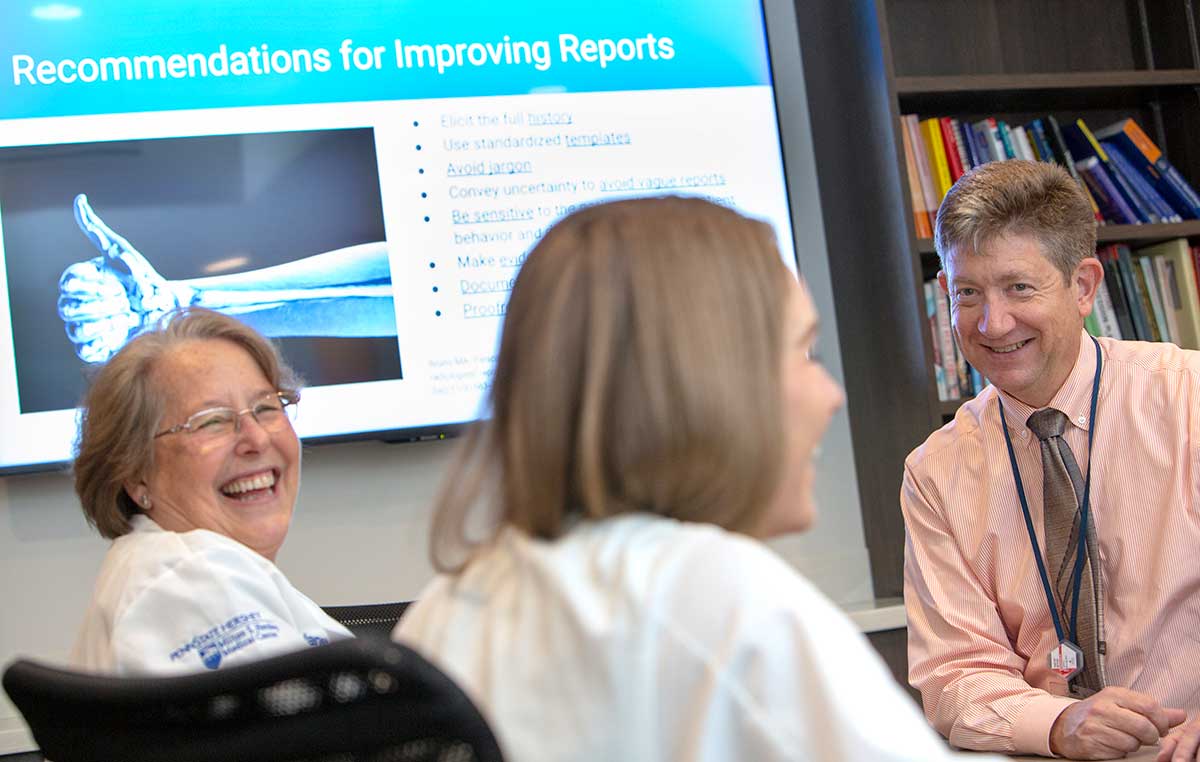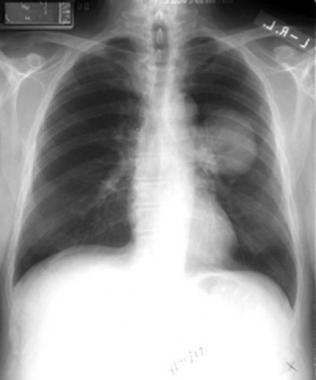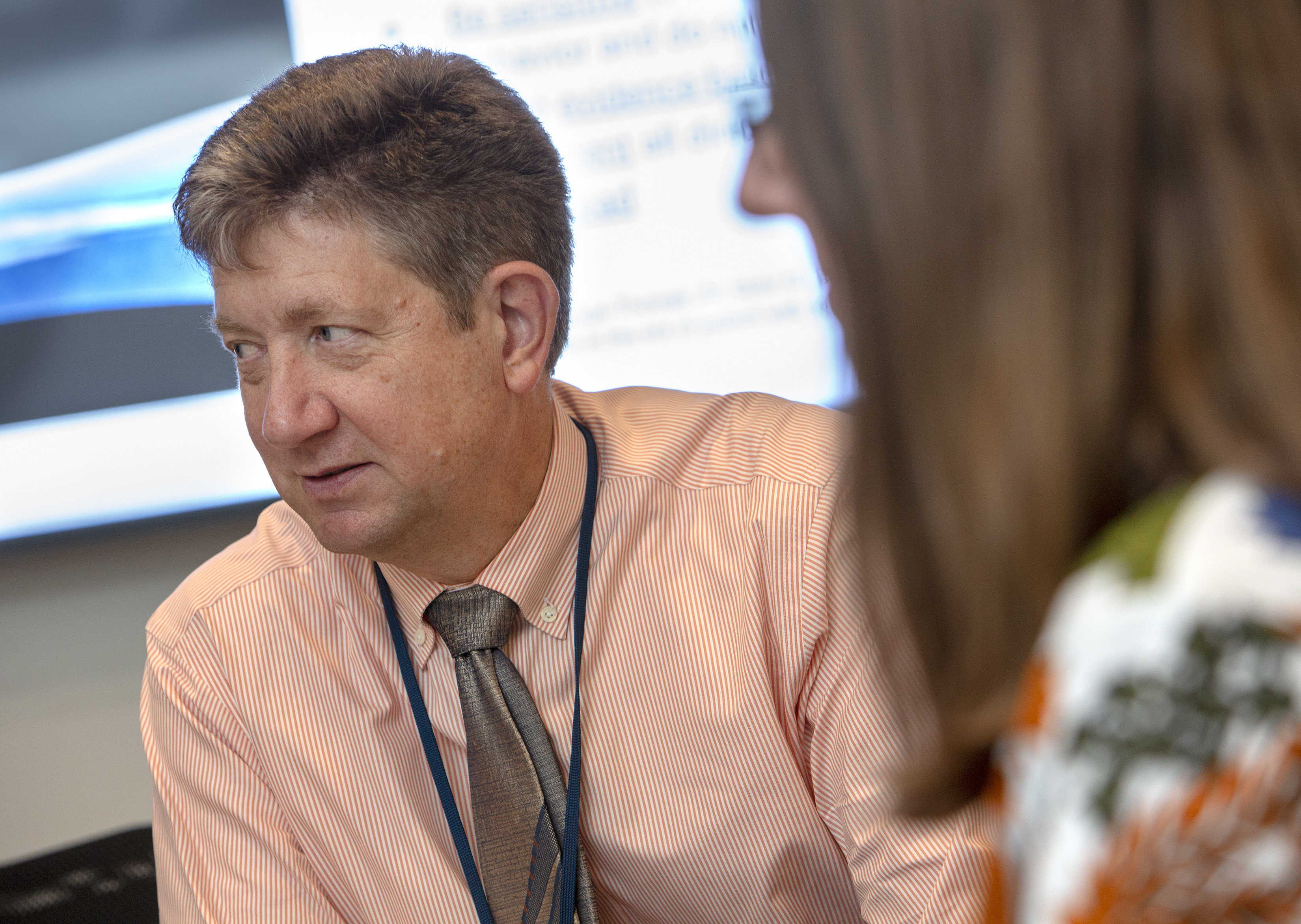Preventing an incorrect diagnosis starts in the classroom

By Katherine Brind’Amour
A new class at Penn State College of Medicine offers students an opportunity to tackle problems in modern health care that can lead to incorrect or even fatal misdiagnoses.
Technically, there is no single course in medical school devoted to uncovering the correct diagnosis. Instead, the entire curriculum aims to teach budding physicians how to identify medical problems, perform an examination and think critically to reach an accurate conclusion.
But after the National Academies of Sciences, Engineering and Medicine released a 2015 report called “Improving Diagnosis in Health Care,” which revealed high rates of diagnostic error and related harm to patients, physicians around the world took notice. And Dr. Timothy Mosher, chair of the Department of Radiology at Penn State College of Medicine, decided to do something about it: develop a medical school course aimed at identifying systemic causes of misdiagnosis—and how to prevent them.
“We are working hard to come up with practical solutions for what we can do to reduce diagnostic error,” says Mosher, who is also a professor of radiology for the College of Medicine. “We’re starting with students—getting them aware of the problem so that as they develop their career, they’ll be thinking about how to bring error prevention into their daily activities.”
Mosher’s students first learn about the frequency and causes of diagnostic error, which is defined as either a failure to correctly and promptly identify a health problem or a failure to communicate the diagnosis to the patient. The class then considers the National Academies’ list of recommendations for real-world ways to identify, address and reduce diagnostic error. Working as a team, the students investigate a practical opportunity for improvement. So far, three groups of students have taken the course.
“The class is totally unique, giving undergraduate medical students a chance to learn about diagnostic error and think about these things while they’re still in their formative years,” says Dr. Mark Graber, founder and president of the Society to Improve Diagnosis in Medicine and a national leader in patient safety. “It’s the first such course in the country, but I’d like to see every school have a course like this. Health care needs to wake up to the problem of diagnostic error and provide more education and training to address it.”

This chest X-ray shows a large, cloudy white circle on the right side—a mass in the lungs—that is easy for radiologists and physicians to identify. Unfortunately, not all abnormal chest images are as obvious a diagnosis.
Mosher, who also serves on the board of directors for the Society to Improve Diagnosis in Medicine, says the overall course goal is concept design.
“We want students to understand the background of the problem so they can think critically for the rest of their career,” he says. “This course takes largely a systems-based approach, bringing the entire picture of care and the health care system to bear on the process of making accurate diagnoses.”
The first cohort of students surveyed radiologists and radiology residents about current factors that lead to errors in radiology reports. The second examined the difficulty of getting feedback when diagnostic errors occur. The most recent group of students examined concerns with a digital patient portal from the perspective of radiologists, patients and the managing physician.
“The course aims to help students understand that the process of reaching an accurate diagnosis is about the patient, and more. It means understanding the patient’s concerns within the context of all the health care they’ve encountered, all the information available and everything outside the doctor’s office affecting them, such as their family, community and environment,” says Dr. Terry Wolpaw, vice dean of Educational Affairs at the College of Medicine. Wolpaw is actively working to add more electives in critical thinking techniques and formal diagnostic deliberation to the curriculum.
Jehan Momin and Ellen Jones, third-year students at the College of Medicine and recent participants in Mosher’s course, describe the class as educational and meaningful for their eventual practice.
“As a future physician, making an effort to reduce diagnostic errors is a vital aspect of patient care and ethical medicine,” says Momin. “We are taught to ‘Do no harm,’ and I believe a part of that is recognizing the fact that errors will always occur, but we must make a concerted effort to reduce them in our practice.”
The course is also making an impact beyond the College of Medicine. Two of the three class cohorts received approval to present their research at the Diagnostic Error in Medicine 11th Annual International Conference Nov. 4-6 in New Orleans.
“Our vision for our students is that they will demonstrate healthy skepticism and curiosity, and willingness to acknowledge uncertainty when confronted with new information or situations,” says Wolpaw. “The importance of focusing more deliberately on critical thinking is that knowledge changes. Being able to think critically and apply it to new information as needed leads to the best possible diagnosis and care plan to help patients achieve their optimal health.”
Reference:
National Academies of Sciences, Engineering, and Medicine. 2015. Improving diagnosis in health care. Washington, DC: The National Academies Press.

“We are working hard to come up with practical solutions for what we can do to reduce diagnostic error,” says Mosher.
If you're having trouble accessing this content, or would like it in another format, please email Penn State Health Marketing & Communications.
